I read an interesting article recently about the origins of the names for the five districts in Shenyang’s city proper. It gave me a lot of insight into Shenyang’s history, so I thought I’d share this information with you.
For those new to the area, let me first give you a brief geographic overview of the city, though.
Shenyang’s city proper is made up of 5 districts, called Dadong, Huanggu, Shenhe, Heping, and Tiexi. They are all quite different sizes, and oddly shaped, not at all like the regular, cookie-cutter districts, boroughs, or neighborhoods of some cities that were clearly thought up at the drawing board and are not organically grown.
Dadong
The first district when you go from north to south is Dadong, 大东 in Mandarin, dà dōng in pinyin. It is one of Shenyang’s big industrial districts, and also home to a number of the city’s landmarks. The 9.18 Museum is located there (for more information on what 9.18 stands for, check my article on the 9.18 Mukden Incident), as are Beita and Xita (the North and East Pagodas).
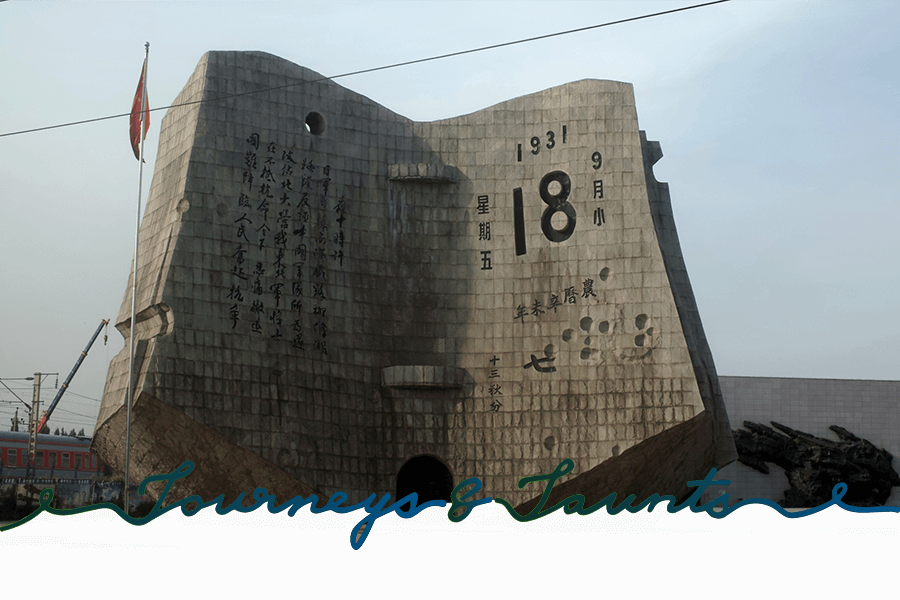
Near Xita is Shenyang’s Korean Street, with lots of yummy Korean food. Check this article and this one for ideas on what to do (and especially, what to eat) in Xita. Wanquan Park is another landmark in Dadong.
The name Dadong literally means “Great East”. Dadong district, however, is not really the easternmost part of Shenyang, but rather in the north. So, what’s up with that?
Actually, the reason for this apparent error is easily explained. In the year 1680 (or year 19 of the Kangxi emperor’s reign, if you want to use Chinese reckoning), 8 gates were built around the city of Shenyang. Because the town was much smaller then, the east gate of this time is now actually located in the middle and slight north of today’s Shenyang. So, the “Great East” came to be where it is today.
Huanggu
Next to Dadong, to the west of it, is Huanggu (皇姑 in Chinese, huánggū in pinyin). Many foreigners in Shenyang rarely set foot into Huanggu, other than to visit Beiling Park or the Entry-Exit Bureau right next door, which regulates visa affairs. But since this district is mostly residential in nature, with fewer entertainment options and less traditional tourist sights, this shouldn’t come as a big surprise.
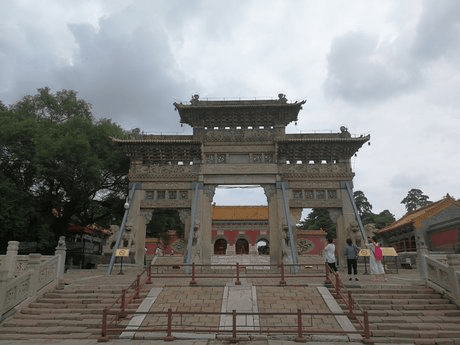
Huanggu can be rendered as “the Emperor’s Aunt” in English. 皇帝 (huángdì in pinyin) means emperor in Chinese, 姑姑 (gūgu in pinyin) is your paternal aunt who is younger than your father.
Why so complicated, you ask? Chinese has different names for family members. Like, the spouse of your male cousin on your father’s side is called something different than the spouse of your male cousin on your mother’s side, your paternal grandfather has a different appellation from your maternal grandfather. And an aunt is called 姑姑 only if she is your father’s younger sister. If she were your mother’s sister, she would be called an 阿姨 instead.
If you are interested in Chinese names for family members, let me know. But that would be a whole other article. Or possibly a series of articles! Because there are regional differences in those names, as well (the North uses other words for the same family relationship than the South of China).
But let’s get back on topic. Huanggu – what does that district have to do with the emperor’s aunt?
The article I read mentioned two possible explanations. The first is that the district is named after the tomb of one of the princes of the Qing dynasty, namely the eighth son of the brother of Nurhaci.
Nurhaci founded the Qing dynasty in 1636 and started the march on Beijing. But that is a totally different story…
Now, the tomb of this princeling was called fenggu tomb. But, as time went by, it was mispronounced so often, that people started calling – and writing it as – Huanggu Tomb.

The second explanation is linked to a legend. According to an ancient story, emperor Nurhaci went hunting near Shenyang one day, and came across a tiny village. In that village, he saw a fair maiden named Huang Gui and fell in love with her (and, hopefully, she also with him). It’s a legend, so insta-love is totally believable. Apparently. Anyway, he loved her for a very long time. Until death did them part, in fact. So, when she died, Nurhaci built her a tomb called Huang Gu Tomb. And in 1938, the part of Shenyang where this tomb was located, was called Huanggu district.
Tiexi
Directly south of Huanggu is Tiexi district. Tiexi is the residential area providing a home to the largest numbers of Shenyangers. In the 1950, its smelting plants, sheet metal factories and other heavy machinery led to Shenyang being perceived as the industrial pride of the Northeast.

Literally, Tiexi means west of the steel (铁钢 is steel, tiěgāng in pinyin; 西 is west, xī in pinyin). The reason for this name is that the area where the district is now lay to the west of the railroad tracks. When the Japanese occupied the railway following the 9.18 incident, that zone did not belong to Shenyang proper yet. It was only incorporated as a district of Shenyang in 1932.
Shenhe
To the east of Tiexi is Shenhe district. It is the oldest part of town, houses part of the old city walls, is home to the Imperial Palace, as well as Shengjing Cultural Street.
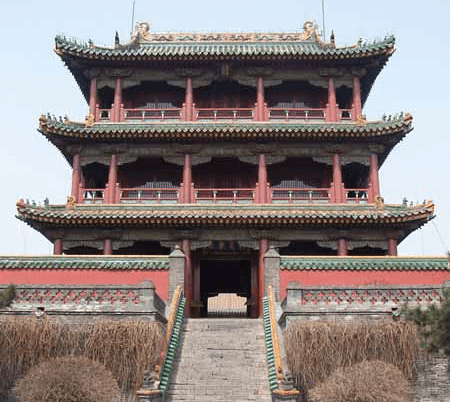
Shenhe might be called “Quiet River” in English, as 沈 (though pronounced chén in pinyin) translates to quiet, peaceful, or silent. And 河 (hé in pinyin) simply means river.
It isn’t as easy as all that, however, when it comes to Shenhe district in Shenyang. Here, Shenhe stands for Shenyang and Hunhe (Hun River), which used to be two districts of the city in the 1930s. They were, however, combined in 1948 to form this new district named Shenhe.
Why did they choose the first syllable of the first one and the second syllable of the second one? No idea. The district could have been named Shenhun, Yanghe, or Yanghun, instead. But Shenhe has a nicer ring to it than the other versions, don’t you think?
Heping
Heping District is modern Shenyang’s downtown area. It grew around Shenyang’s first railway station and holds many commercial areas, residential compounds, and is also home to the city’s foreign consulates.
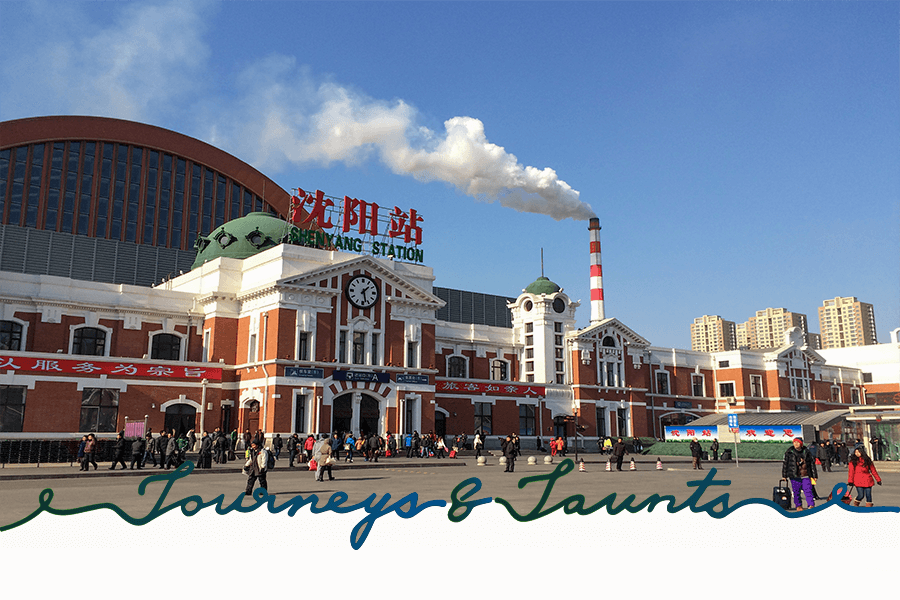
Heping’s name means peace in English (和平 in Chinese, hépíng in pinyin). The district used to be a Japanese concession, before the People’s Liberation Army reached Shenyang. They then declared its name Heping, to symbolize the peace that would henceforth reign in the city.
What do you think of those names and where they came from? Is the whole thing clearer to you, or have I confused you even more? Let me know in the comments!


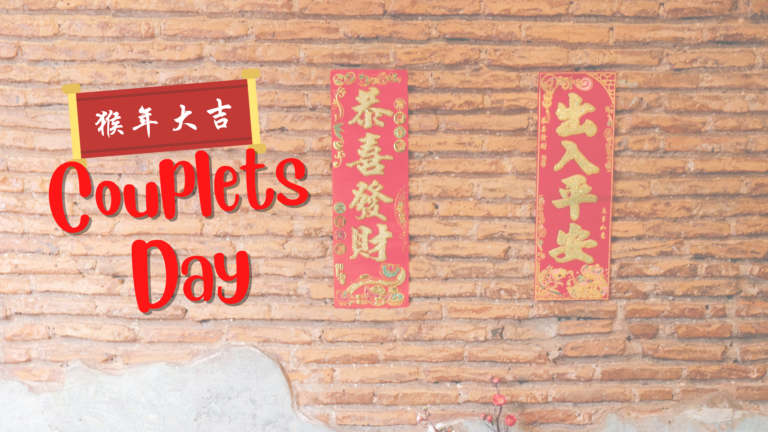


Pingback: What’s in a Name? Shenyang Through the Ages | Journeys & Jaunts